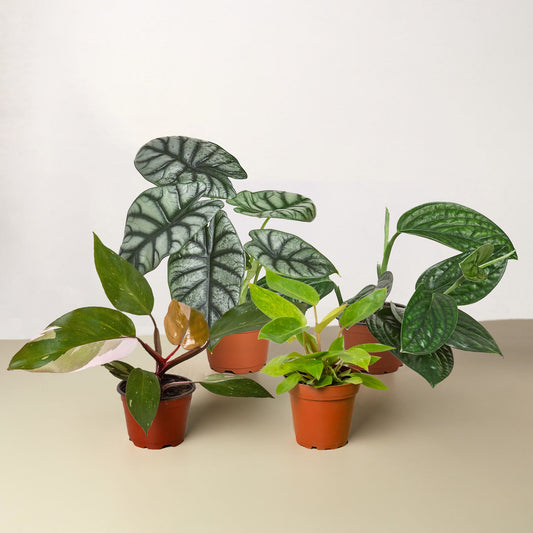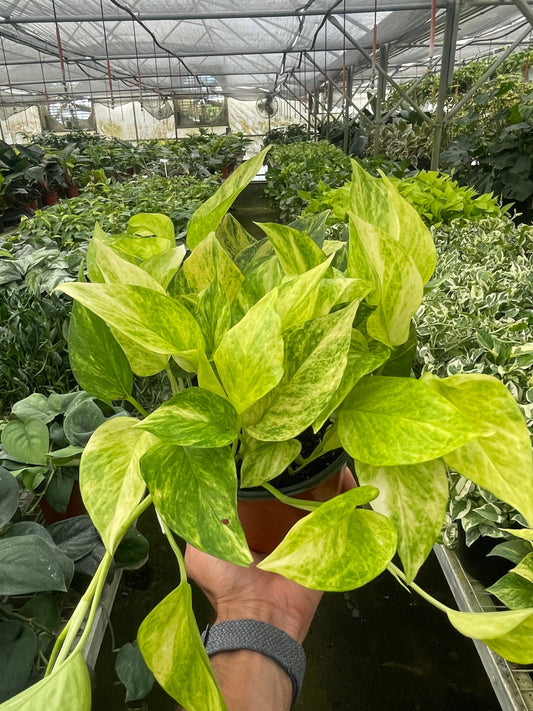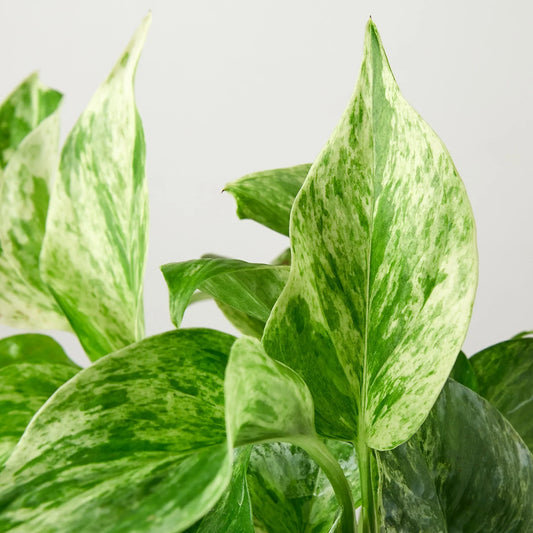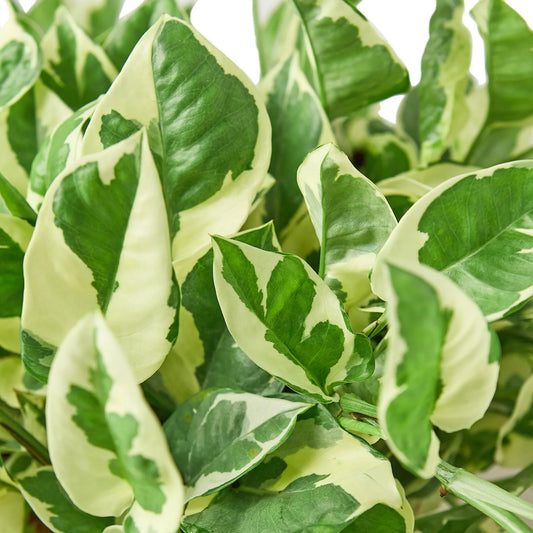Types of Monstera Varieties: The Complete Guide
Cafe Planta Team
Monstera plants have taken the world by storm, and it's no surprise why. With their striking leaves and easy-going nature, these beauties are a favorite among plant lovers. But did you know there are actually several varieties of Monstera, each with its own unique charm?
In this guide, we'll explore the different types of Monstera varieties, providing insights into each one's distinctive features, care tips, and how they can fit into your home. Whether you're a seasoned plant parent or just starting out, there's a Monstera for everyone.
Monstera Deliciosa
Let's start with the classic Monstera Deliciosa, often referred to as the Swiss Cheese Plant. This variety is probably what most people picture when they hear "Monstera." It's famous for its large, glossy leaves that develop dramatic splits and holes as they mature. These fenestrations not only add to the plant's aesthetic appeal but also help it survive in its native tropical environments by allowing light to pass through to the lower leaves.
Caring for a Monstera Deliciosa is relatively straightforward. Here are some key points:
- Light: Prefers bright, indirect light but can tolerate low light. Too much direct sunlight can scorch the leaves.
- Water: Water when the top inch of soil feels dry. Overwatering can lead to root rot.
- Humidity: Thrives in humidity but can adapt to average home humidity levels.
- Temperature: Keep in temperatures between 65-85°F (18-29°C).
Interestingly, Monstera Deliciosa can grow quite large, making it a fantastic statement piece for any room. If you have the space, let it climb! Providing a moss pole or trellis can encourage vertical growth and help it reach new heights.
Monstera Adansonii
Next up is Monstera Adansonii, also known as the Swiss Cheese Vine. It's a smaller, vining relative of the Deliciosa, characterized by its smaller, more numerous holes. This variety is perfect for hanging baskets or trailing down a shelf.
Monstera Adansonii care tips include:
- Light: Prefers bright, indirect light but can tolerate lower light levels.
- Water: Keep the soil slightly moist but allow the top inch to dry out between waterings.
- Humidity: Loves humidity, so consider misting or placing near a humidifier.
- Temperature: Ideal temperatures range from 65-80°F (18-27°C).
The Monstera Adansonii is a great option for smaller spaces or for those who enjoy a bit of whimsy with their plants. Its playful leaves add a touch of the exotic without taking over your entire living room.
Monstera Obliqua
Monstera Obliqua is a rare gem in the plant world. It's often confused with Monstera Adansonii due to their similar appearance, but Obliqua is much more delicate and has more holes than leaf! This variety is for the dedicated plant lover who enjoys a challenge.
Here's how to keep a Monstera Obliqua happy:
- Light: Needs bright, indirect light. Direct sunlight can damage its delicate leaves.
- Water: Keep the soil consistently moist but not soggy.
- Humidity: Requires high humidity levels, often above 80%.
- Temperature: Prefers warmth, between 70-85°F (21-29°C).
Monstera Obliqua is not for the faint of heart, but its ethereal beauty is well worth the effort. If you can provide the right conditions, you'll be rewarded with a truly unique plant.
Monstera Peru
Monstera Peru, also known as Monstera Karstenianum, showcases a different look. Its leaves are thick, leathery, and have a distinctive ripple effect. This variety doesn't develop fenestrations like its cousins, making it stand out in a collection.
Care tips for Monstera Peru include:
- Light: Enjoys bright, indirect light but can tolerate lower light.
- Water: Water when the top inch of soil is dry to the touch.
- Humidity: Appreciates higher humidity but can adapt to average levels.
- Temperature: Keep in temperatures between 65-80°F (18-27°C).
The Monstera Peru is a fantastic option for plant parents looking for something different. Its unique texture adds depth and interest to any plant display.
Monstera Dubia
Monstera Dubia is a lesser-known variety that's gaining popularity for its climbing habit and shingle-like leaves. In its juvenile form, Dubia's leaves lie flat against surfaces, giving it a unique appearance reminiscent of climbing ivy.
To care for Monstera Dubia, consider the following:
- Light: Prefers bright, indirect light.
- Water: Keep the soil slightly moist but avoid waterlogging.
- Humidity: High humidity is beneficial, especially for juvenile plants.
- Temperature: Thrives in temperatures between 65-80°F (18-27°C).
Monstera Dubia is perfect for those who love the idea of a living wall. It's a bit of a climber, so giving it a surface to grow on will bring out its best qualities.
Monstera Pinnatipartita
Monstera Pinnatipartita is a stunning variety known for its deeply divided leaves. As it matures, the leaves develop splits that resemble fingers, adding an elegant touch to your plant collection.
Here's how to care for Monstera Pinnatipartita:
- Light: Prefers bright, indirect light but can tolerate some shade.
- Water: Water when the top inch of soil feels dry.
- Humidity: Enjoys higher humidity but can adapt to average home conditions.
- Temperature: Ideal temperatures are 65-85°F (18-29°C).
Monstera Pinnatipartita is a great option for plant lovers who appreciate a touch of sophistication in their greenery. Its graceful leaves can serve as a focal point in any room.
Monstera Siltepecana
Monstera Siltepecana, sometimes called the Silver Monstera, is known for its unique silver sheen and elongated leaves. This variety is a climber, making it perfect for trellises or hanging displays.
Care tips for Monstera Siltepecana include:
- Light: Prefers bright, indirect light but can tolerate lower light levels.
- Water: Water when the top inch of soil is dry.
- Humidity: Thrives in higher humidity but can adapt to average home conditions.
- Temperature: Maintain temperatures between 65-80°F (18-27°C).
The striking silver hues of Monstera Siltepecana add a touch of elegance and uniqueness, making it a wonderful addition to any plant collection.
Variegated Monstera
Last but certainly not least, variegated Monstera varieties are the crown jewels of the Monstera family. These plants feature stunning patterns of cream, white, or yellow on their leaves, creating a striking contrast with the rich green.
Popular variegated types include:
- Monstera Deliciosa 'Albo Variegata': Known for its white patches and streaks.
- Monstera Deliciosa 'Thai Constellation': Features creamy white variegation with speckles.
Variegated Monstera care requires a bit more attention:
- Light: Needs bright, indirect light to maintain variegation.
- Water: Allow the top inch of soil to dry out between waterings.
- Humidity: Prefers higher humidity levels.
- Temperature: Keep in temperatures between 65-80°F (18-27°C).
Variegated Monsteras are highly sought after and can be a bit pricier, but their stunning appearance makes them a worthy investment for any plant lover.
Final Thoughts
In conclusion, Monstera varieties offer a delightful range of options for plant lovers of all levels. From the classic Deliciosa to the exotic Obliqua, each has its unique charm and care needs.
At Cafe Planta, we're passionate about helping you find the perfect Monstera for your home. Our selection includes popular favorites and unique varieties, along with all the plant care accessories you might need. If you have any questions, don't hesitate to email us or send us a message on Instagram. We believe plants have the power to connect us with nature and each other, and we're excited to be part of your plant journey.



















